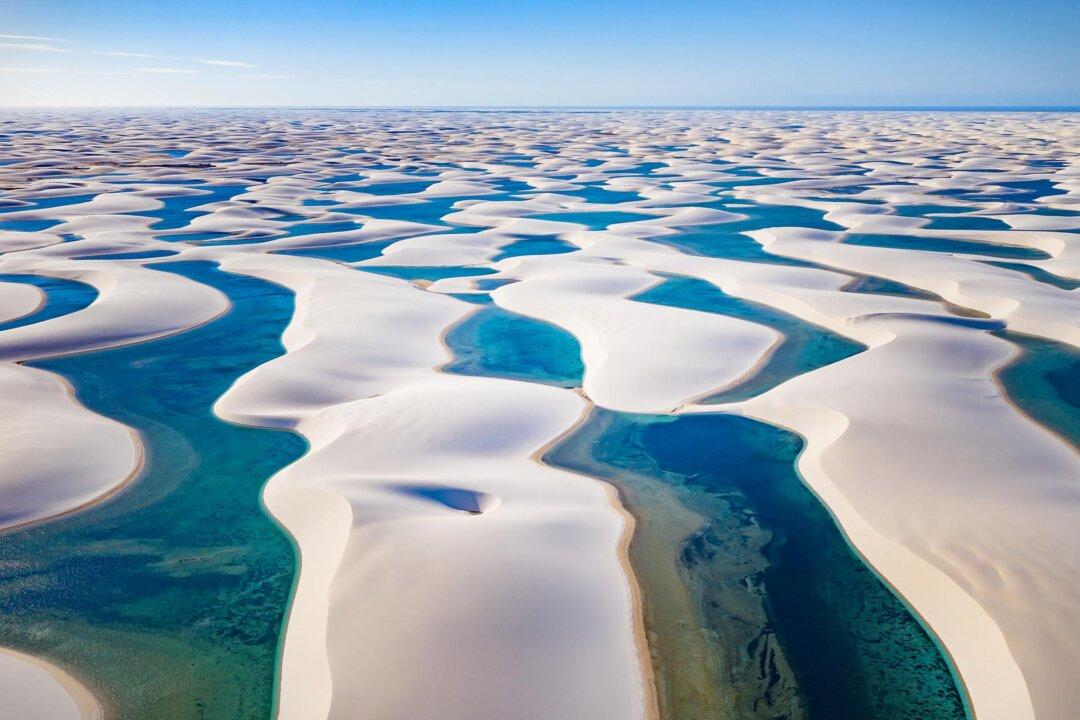Disclaimer: This article was published in 2023. Some information may no longer be current.
These endless sand dunes stretching to the horizon might make you think you’ve wandered into the Sahara. Yet with countless blue-turquoise lagoons weaving like emerald ribbons between each valley of sand, farther than eyes can see, the sight is quite extraterrestrial.






